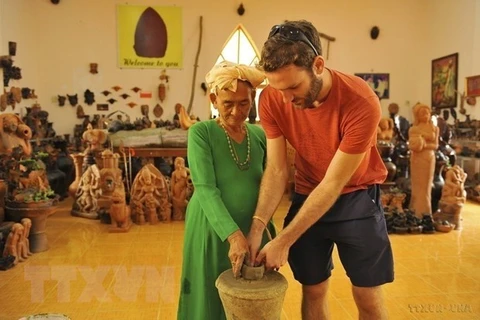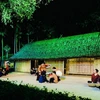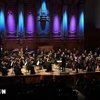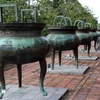Hanoi (VNA) – “Nha Nhac” (Vietnamese royal court music), which has been recognised by the UNESCO as world cultural heritage, is a special art form to explore in the ancient imperial city of Hue, the central province of Thua Thien-Hue, which brings the audience to ancient days during the Nguyen Dynasty, the most flourishing period of the art.
Over 1,000 years of shaping, development
According to researchers, royal court music was introduced with the establishment of the monarchy in Vietnam. From the Ly Dynasty (1010-1225), royal music was introduced and developed through Tran Dynasty (1225-1400), Ho Dynasty (1400-1407), Tay Son Dynasty (1889-1801) and reached its peak growth in the Nguyen Dynasty (1802–1945).
The royal court music symbolises the king's longevity and prosperity of the dynasty. Therefore, “Nha Nhac” was highly valued by Vietnamese monarchies.
Under the Nguyen Dynasty, Nha Nhac was performed during important ceremonies of the Royal Family.
During the reign of King Thanh Thai, a Nha Nhac team had 120 members and 20 junior musicians. During the reign of King Khai Dinh, 30 more junior musicians were added to the troupe. Nha Nhac had such an important position that artisans in Nha Nhac that had great experience in the profession would be awarded a title by the court.
During the Nguyen Dynasty, big troupes were used to perform during ceremonies, while smaller ones often perform in royal gatherings. The music was exclusively for the Royal Family, that was why it is called royal court music.
Gradually, the elegant way of enjoying the music was spread to the community.
Following the collapse of the Nguyen Dynasty, Nha Nhac faded away and faced the risk of being lost.
However, right after the art was recognised by the UNESCO as an oral and intangible cultural heritage of humanity on November 7, 2003, Vietnam designed a national action plan to restore, recover and develop the values of Nha Nhac.
Today, Hue royal court music is often performed during special occasions such as Hue Festival, Buddhism ceremonies, folk festivals, or performed as a chamber music to serve national guests and tourists. Therefore, its values have been continuously promoted.
Exploring the art of Hue royal court music
Unlike other musical genres of Vietnam, royal court music is the only national music of the country.
The Hue court music comes in three forms of Dai Nhac, Tieu Nhac (including orchestras and pieces mainly preserved at folk festivities), and court dances.
Vietnamese Nha Nhac has a very rich system of compositions. The most valuable musical instruments of Vietnam are present in the court orchestra of the Nguyen Dynasty, associated with rich rhythms and songs with profound content.
The court orchestra usually has rich types of musical instrument categories such as wind instruments, strings instruments, membranophones, among others.
Nha Nhac not only contains the music system based on the pentatonic scale, but also includes the performing arts. Speaking of Nha Nhac is referring to instrumental performance techniques, in which each instrument applies a certain level of technical virtuosity.
Restoring, promoting Nha Nhac among contemporary community
As a priceless treasure of Vietnam, since 1992, Nha Nhac has been preserved and introduced to the world.
A national programme on restoring and researching Hue royal court music was proposed by domestic and foreign experts during the international conference of intangible cultural heritage in Hue in March 1994.
In 1995, the music was performed in France and many European countries.
On November 7, 2003, Hue royal court music was recognised by the UNESCO as an oral and intangible cultural heritage of humanity. According to UNESCO, among the genres of traditional music in Vietnam, Nha Nhac has reached national stature.
During the past 16 years, the Hue Monuments Conservation Centre has collected, researched and restored a large number of Nha Nhac compositions used in different ceremonies.
It has also worked hard to popularise the music to the community through regularly organising performances.
In 2004, at the third Hue Festival, many stages organised Nha Nhac performances with great success. Since 2005, this art form has been fully promoted, attracting the attention of tourists to the ancient capital city.
The art became a highlight during Hue Festivals in 2004, 2006 and 2008. It has also been performed to meet the demands of tourists to Hue./.




























